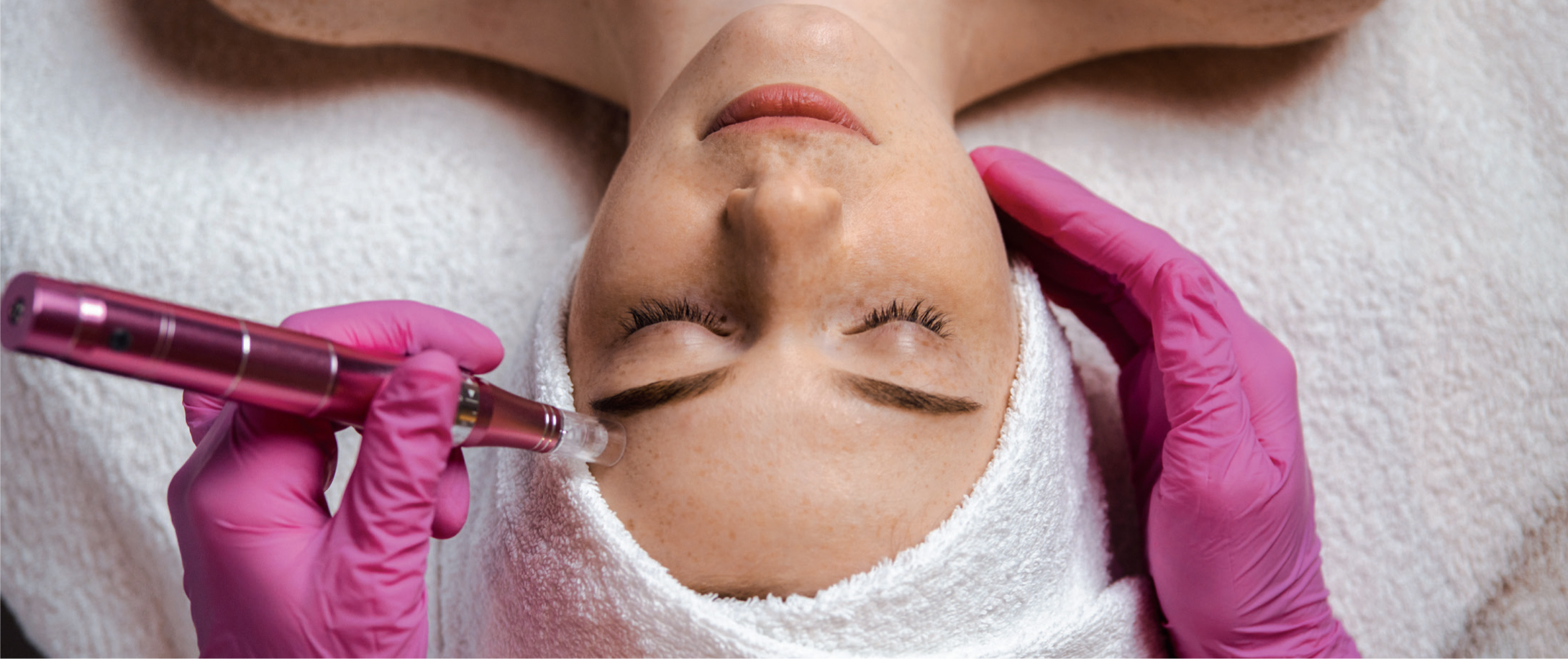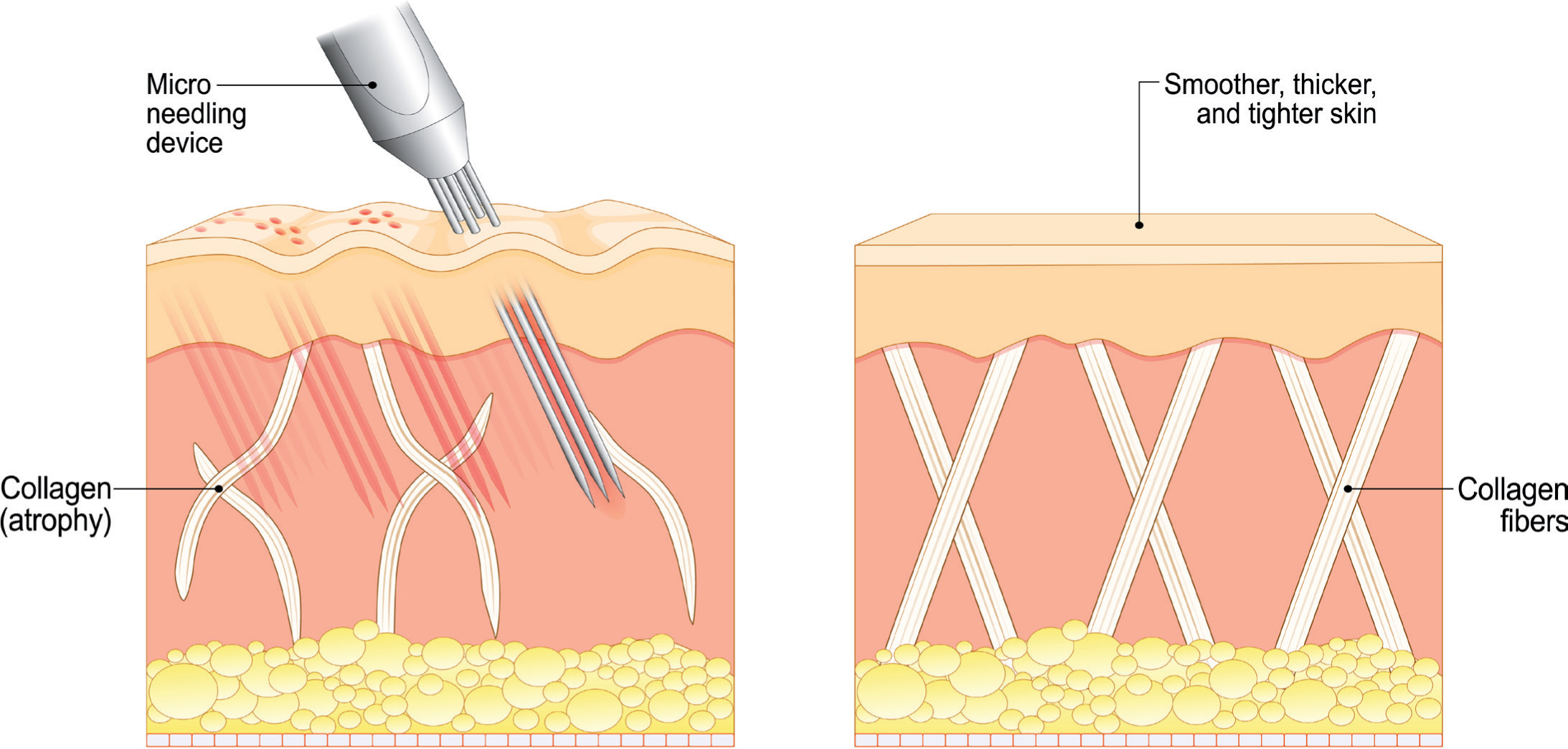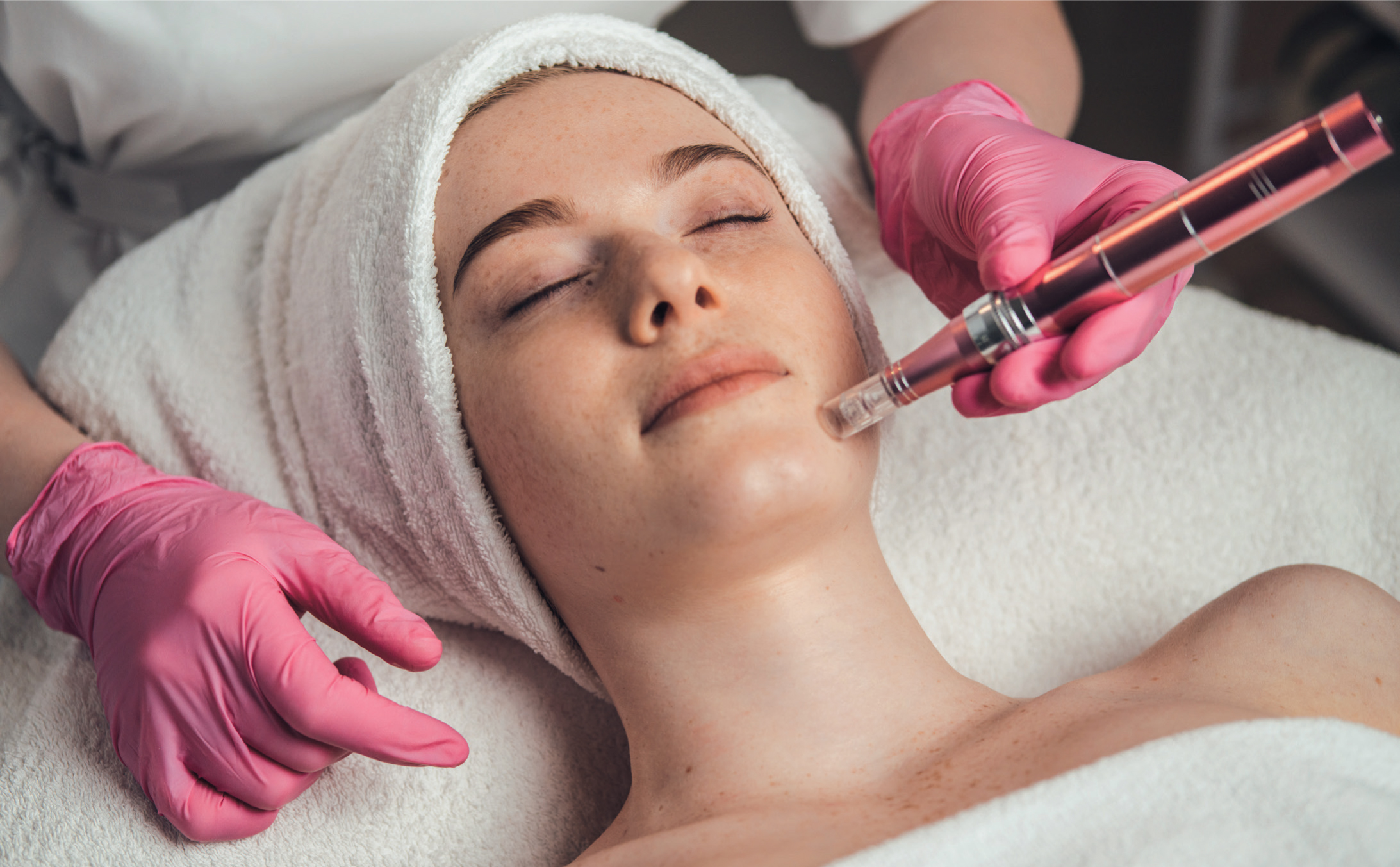

Skin care and skin health has risen to ever-increasing prominence in public opinion within recent years. A patient's satisfaction with the appearance of their skin should be even more pressing to the aesthetic practitioner when considering the fact that dermatological conditions, such as acne vulgaris, can significantly impair a person's psychosocial wellbeing, relationships and quality of life. Indeed, as an example, 25.7% of 723 cross-sectional survey participants with atrophic acne scars felt less attractive or were embarrassed or self-conscious because of their scars; furthermore, 8.3% reported being regularly verbally and/or physically abused because of their scars, and 43.2% felt that their scars had negatively impacted their relationships (Tan et al, 2021).
Microneedling, a process involving repetitive puncturing of the skin with sterilised microneedles, presents a minimally invasive modality that is fast gaining popularity, due to its ability to harness the potential of the body's own regenerative processes and its versatility for both at-home and professional use. It is most commonly used as a skin resurfacing and rejuvenation procedure, with the microwounds caused by the tiny needles of the microneedling device triggering collagen production through a downstream wound healing cascade. However, there is debate as to whether microneedling is more effective as either an adjuvant treatment or as a monotherapy for a growing number of applications. To prepare for an increasing variety of patient concerns, aesthetic professionals must be appraised of the benefits of microneedling as either a mono- or combination therapy for a range of different applications.
The applications
Hair regrowth
In recent years, microneedling has risen to prominence as an effective methodology for the treatment of hair loss. There are many different types of hair loss, but androgenic alopecia (AA) (characterised by hair loss from the top of the head and determined by hormonal and genetic factors) affects approximately 80% of Caucasian males and 50% of females and will therefore be the presentation most frequently encountered by aesthetic practitioners (Yang et al, 2021). Microneedling has been found to be most effective in combination with other treatments for hair loss, such as drug therapy. For instance, in the treatment of 100 male patients with AA, combination therapy of microneedling with minoxidil was demonstrated to be statistically superior to minoxidil alone (Dhurat et al, 2013). Over 12 weeks, dermaroller treatment, combined with 5% minoxidil lotion, was administered to half of the participants, with 80% showing moderately or greatly increased hair regrowth; of the same cohort, 82% reported subjective improvement greater than 50% in their hair growth (Dhurat et al, 2013). In the cohort receiving 5% minoxidil alone, only 4.5% of patients reported greater than 50% improvement (Dhurat et al, 2013).
More recently, preclinical studies have demonstrated the benefits of integrating microneedling with therapeutic exosomes for hair regeneration. Therapeutic exosomes are stem cell-derived nanoparticles, representing a new frontier in regenerative medicine that can be used in a variety of applications—for example, exosomes derived from self-renewing mesenchymal stem cells (MSCs) contain proteins and lipids that can assist in the management of endocrine disorders, such as diabetes and cancer (Abdulmalek et al, 2024). To aid hair regeneration, Hong et al (2021) integrated soluble microneedle patches with the exosomes of human amniotic mesenchymal stem cells (hAMSCs) and hair nanoparticles (HNP). The HNP-infused microneedle patches were able to successfully penetrate the cuticle and assist in delivering the exosomes of hAMSCs into the dermis to stimulate hair follicle stem cells; this strategy demonstrated effective hair growth within 7 days, with minimum inflammation in an animal model (Hong et al, 2021). Other animal models have also affirmed the efficacy of similar methodologies. A microneedle device integrated with MSC-derived exosomes and a molecular drug, UK5099, was found to enhance treatment efficiency at a reduced dosage, leading to promoted pigmentation and hair regrowth within 6 days through two rounds of administration in a mouse model (Yang et al, 2019). This microneedle-based transdermal drug delivery approach showed improved efficacy when compared to the subcutaneous injection of exosomes and topical administration of UK5099 (Yang et al, 2019).
Skin rejuvenation
Microneedling was largely used for scar reduction when it first emerged on the market, but it has now been applied to address a wide range of patient concerns, including wrinkles. The wound healing cascade that contributes to the reduction of scarring also plays a role in the rejuvenation of the skin. In 35 subjects who underwent treatment of the neck with a microneedling pen containing 14 0.25mm needles, two Global Aesthetic Improvement Scales showed significant improvements at 90 days post-treatment (P < 0.001), and most subjects reported some level of improvement in their appearance at 30 days (73.3%) and 90 days (68.8%) post-treatment (Alqam et al, 2022). Again, as with hair loss treatment, combination therapy can achieve better outcomes. In particular, integration of microneedling with platelet-rich plasma (PRP) treatment has demonstrated efficacy: in a split-face comparative study of 25 patients, excellent response to treatment was seen in five (18.5%) patients who received PRP and microneedling when compared to two (7%) patients who received treatment with vitamin C and microneedling, according to a physician's assessment (Chawla, 2014).


Vitiligo and melasma
Vitiligo is a chronic skin condition, characterised by depigmented white patches caused by the destruction of melanocytes and known to resist conventional therapies, such as topical and systemic corticosteroids and ultraviolet light and laser therapy. However, microneedling has been reported to potentially stimulate melanocytes and skin re-pigmentation and works well as a combination therapy to address vitiligo. For instance, in a randomised controlled study, a total of 60 patients with stable vitiligo were randomly and equally assigned into two groups, with Group A treated with microneedling followed by topical 5% 5-fluorouracil and Group B treated with topical 5% 5-fluorouracil alone (Zahra et al, 2020). The procedure was performed every 2 weeks for 3 months; at the end of the 6-month assessment period, initiation of repigmentation had started at 1 month in 76 patches (65%) in Group A and 45 patches (38.7%) in Group B (P = 0.0001), and excellent improvement (>75% repigmentation) was noted in 55 patches (47%) in Group A when compared to five patches (4.3%) in Group B (P = 0.03) (Zahra et al, 2020).
In contrast, melasma is a type of acquired hyperpigmentation disorder that affects the photo-exposed parts of the face, causing the overproduction of melanocytes. Here, too, microneedling as an adjuvant treatment has proved efficacious, facilitating the delivery of topical therapies to the epidermis and dermis. For instance, over a 4-month treatment period, Farshi and Mansouri (2020) compared the efficacy of microneedling, performed with needles loaded with meso-depigmentation solution (mesoneedling), to standard microneedling, performed with needles only, with results demonstrating that 2–4 sessions of mesoneedling were considerably more effective in treating melasma than microneedling alone.
Conclusion
The applications of microneedling have expanded considerably over recent years, and a variety of patient concerns can be effectively treated through the use of this methodology, with combination therapy being proven in the literature to be more effective than monotherapy alone.




